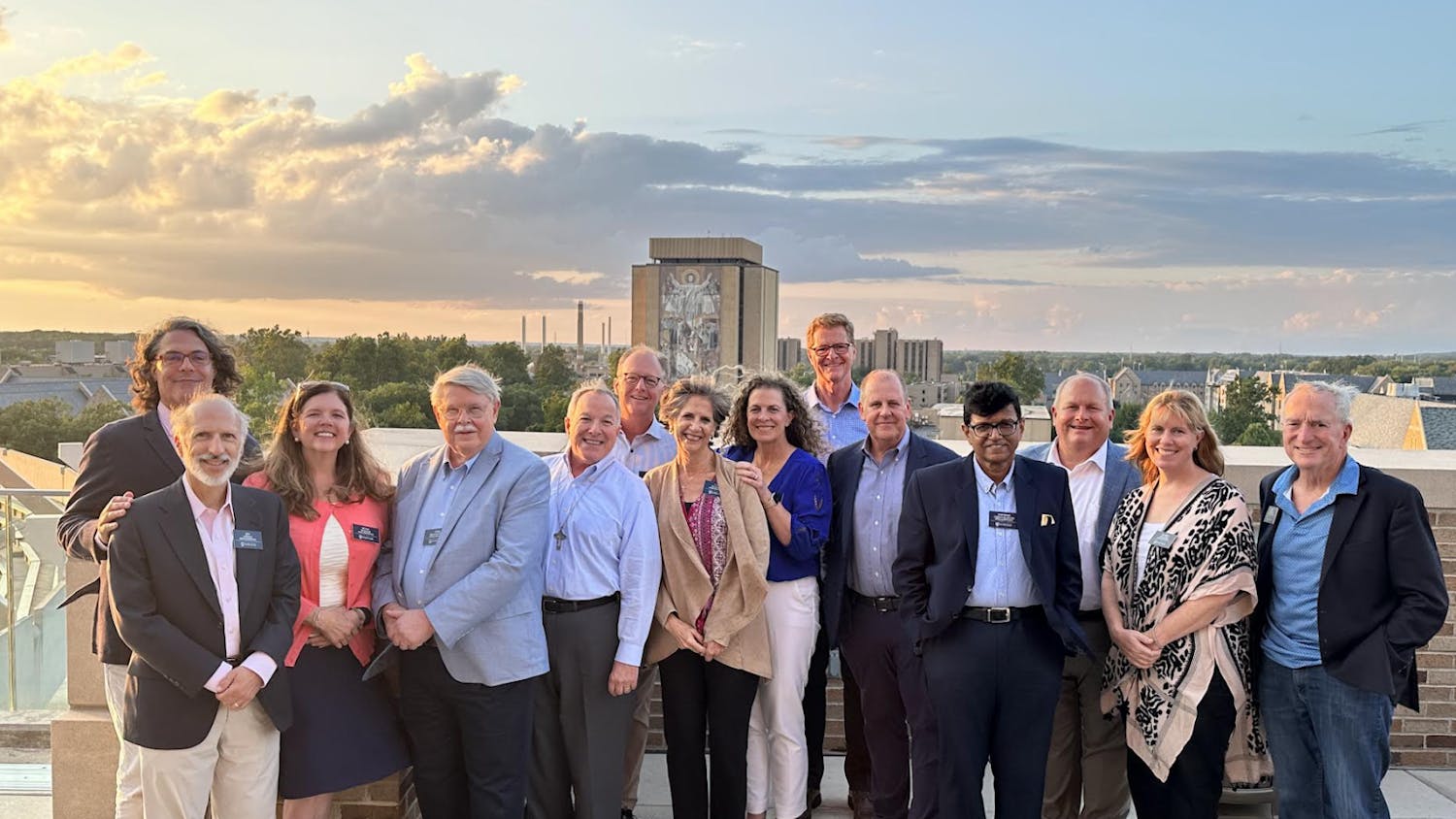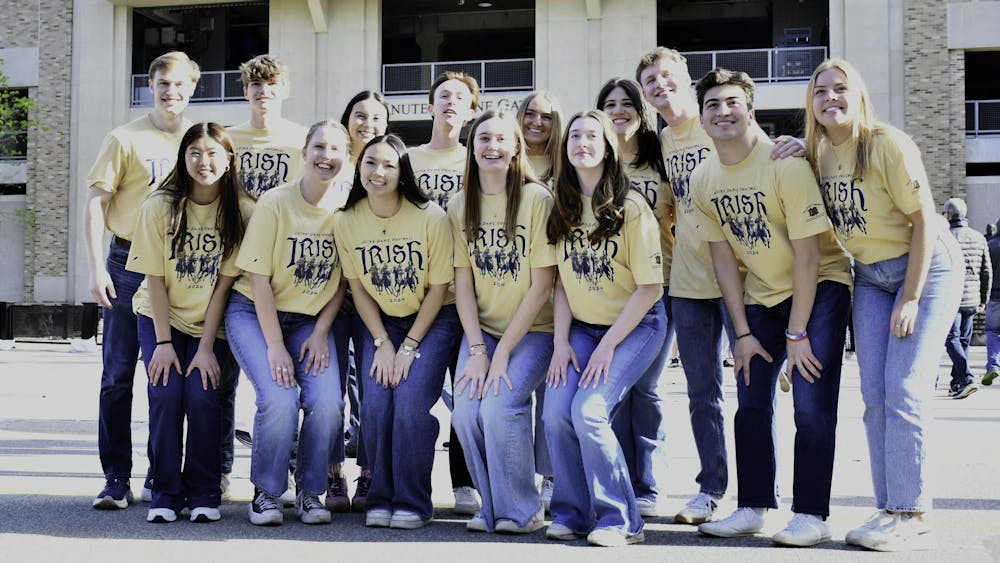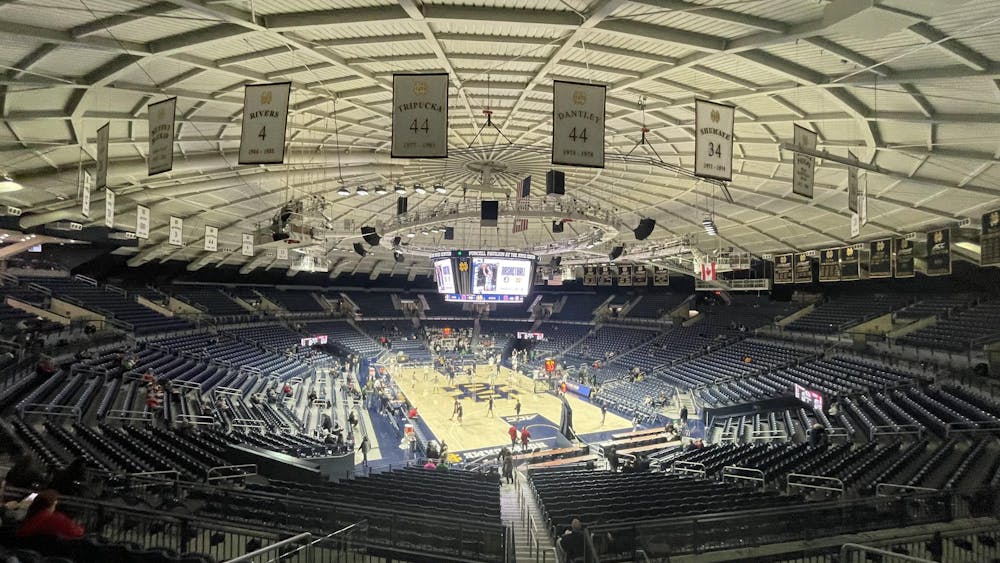The Saint Mary's College Moreau Center for the Arts unveiled three new exhibits on Friday, Oct. 11. The Hammes, Sister Rosaire and Little Theater galleries welcomed Lawrence Sumulong, Shawne Major and Ann Tarantino to their respective walls.

Tiffany Bidler, assistant professor of art and directory of the galleries, said Sumulong, a photographer based out of New York, was an ideal choice in her quest for "resonance" in the gallery.
Sumulong's multimedia creation, "From the Prison House," documents the experiences of Filipino Muslim female domestic workers, Bidler said.
"There are many departments, professors and students on campus who are interested in the experiences of women in a global context and so I thought his work would find an audience at Saint Mary's," Bidler said.
The black and white slideshow features photos taken at the Salam Compound, a walled community of displaced Filipino Muslims. In an effort to improve the living conditions of Muslims in the Philippines, the Libyan government bought the land for the compound in TandangSora, Quezon City in the 1970s, Bidler said.
"Students who have taken courses in Global Studies or Gender and Women's Studies - or any course that focused on issues of gender, religion and social justice - would appreciate Lawrence Sumulong's concern with the difficulties faced by migrant workers and his desire to use his artistic abilities to help us hear the voices of these women," Bidler said.
Sumulong also showed images from a diary that a Filipino domestic worker had kept while wrongfully imprisoned in Saudi Arabia. While the woman did not live in the Salam Compound, her experience reflected that of many female domestic workers who did.

Notre Dame senior Ryan Shea said he saw the exhibit and considered it "very bleak."
Shea said he was deeply moved by the numerous prayers the prisoner had written in her diary entries. The piece served as a way to humanize the unseen and oppressed women, Shea said.
"These prisoners are not a visible part of our lives and thus easy to forget about," Shea said. "Obviously, it was quite dark."
The exhibits of Major and Tarantino's pieces were more introspective, Bidler said.
"Sumulong's photographs have a meditative quality and the lines of writing he photographs formally resonates with the lines and threads in the work of Tarantino and Major," Bidler said.
Tarantino said her work focuses on "lonely figures in unknown landscapes, underwater creatures, unknowable beings, neural networks, and maps of cities - real and invented."
Bidler said Tarantino establishes a systematic theme in the delicate patterning of nervous tissue, emotional ties found in contemporary social networks and the elaborate web of parasitic and symbiotic relationships required to maintain healthy ecosystems.
Poured ink is blown through a straw to create intricate patterns on the gallery's white walls, Bidler said. Tarantino is also known to use an air compressor to propel paint depending on what surface she is painting.
"Tarantino creates site-specific wall drawings that are temporary and ephemeral," Bidler said.
Tarantino, an assistant art professor at Pennsylvania State University was able to establish a personal connection with students while painting her piece on the surface of the gallery's walls.
"Ann Tarantino came to campus to create her wall painting and she spent time talking to students informally and answering questions about her process. It was really wonderful to have her here as a resource for our students," Bidler said. "We have courses in fibers, painting and photography in the art department and one of the charges of the gallery is to expose students to different artistic practices."
Major said she is interested in how the perception of reality is affected by dreams, memory, superstition, religion, bias, prejudice and fear. Major wove cheap plastic items together to create various wall hangings in her exhibit.
"My mixed-media works refer to the overlay of belief systems created by the individual to piece together their personal paradigm," Major said.
Major said she uses various objects and even "junk" to create a metaphorical image of how people take in information and to challenge traditional ideas about art.
"My vocabulary - a combination of kisch, ersatz and craft materials, junk and personal objects - is re-aesthetisized into accumulated forms that serve as metaphors for the build-up, organization and assimilation of information," Major said. "The vernacular, as a language of objects indigenous to my class and culture is used here to subvert the hierarchy of art."
The fact that the mass-produced, synthetic materials that make up her pseudo-tapestries deliberately aim to undermine the elitism associated with handcrafted objects, Major said.
Bidler said the way Major uses found objects in her work imparts a sense of the objects being inherited.
"Shawne Major works with fibers and found objects. Her work emphasizes materiality and provides a sense of permanence, they have the feeling of inherited objects," Bidler said.
Bidler said the works of both Tarantino and Major, though different, are concerned with memory and information.
"I enjoy the complexity of her work and the way the small accumulated objects she embeds in the piece trigger personal memories and associations," Bidler said. "Ann Tarantino and Shawne Major are both interested in systems, networks, memory and information but these interests are manifested in really different ways in their work. "
Bidler said all three of the exhibits will be on display until Nov.1.












